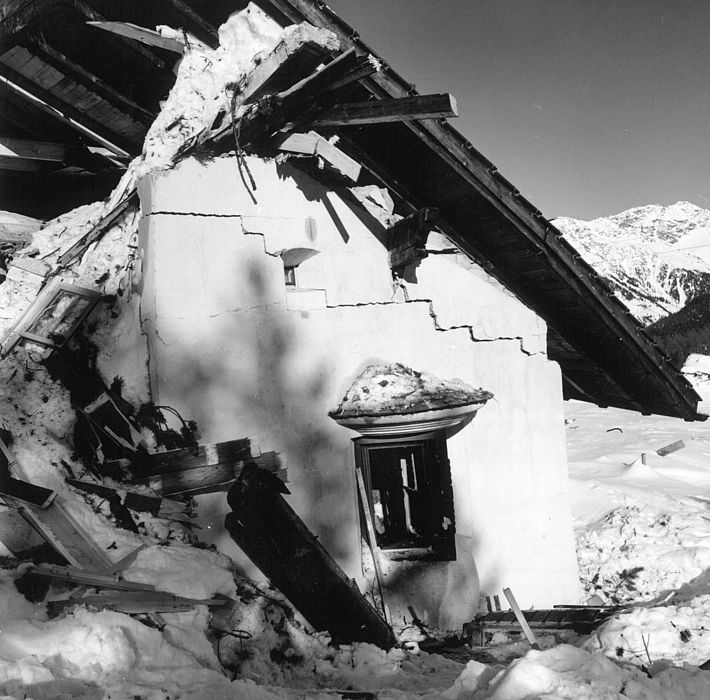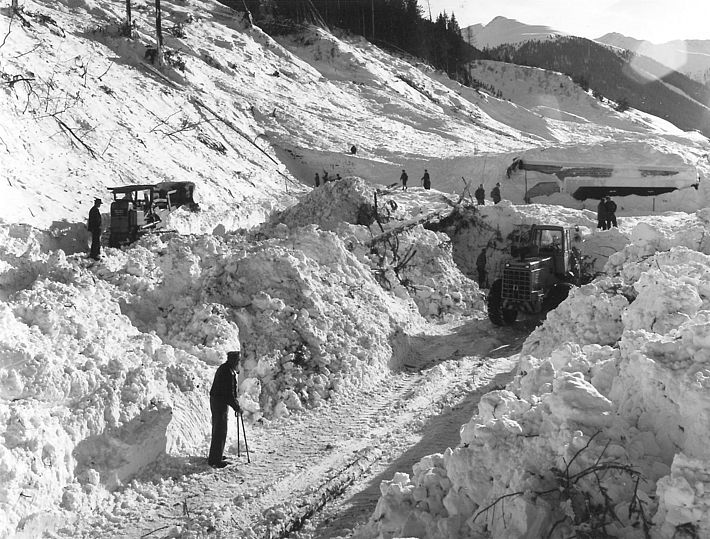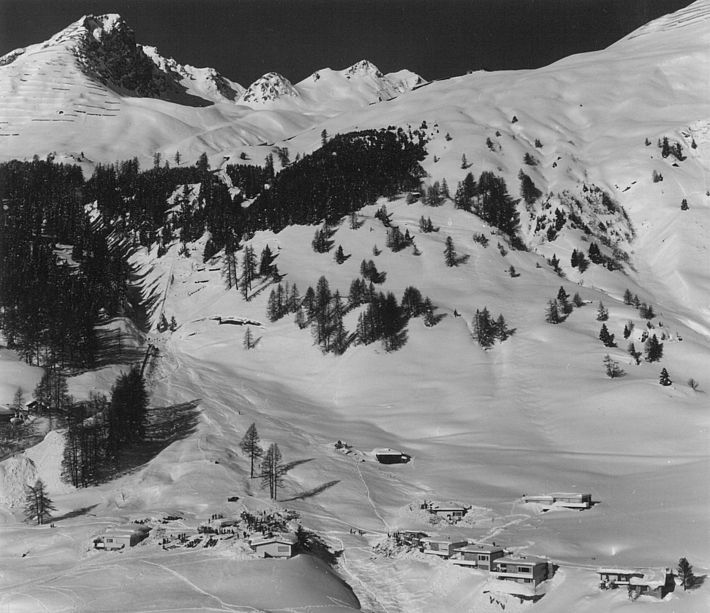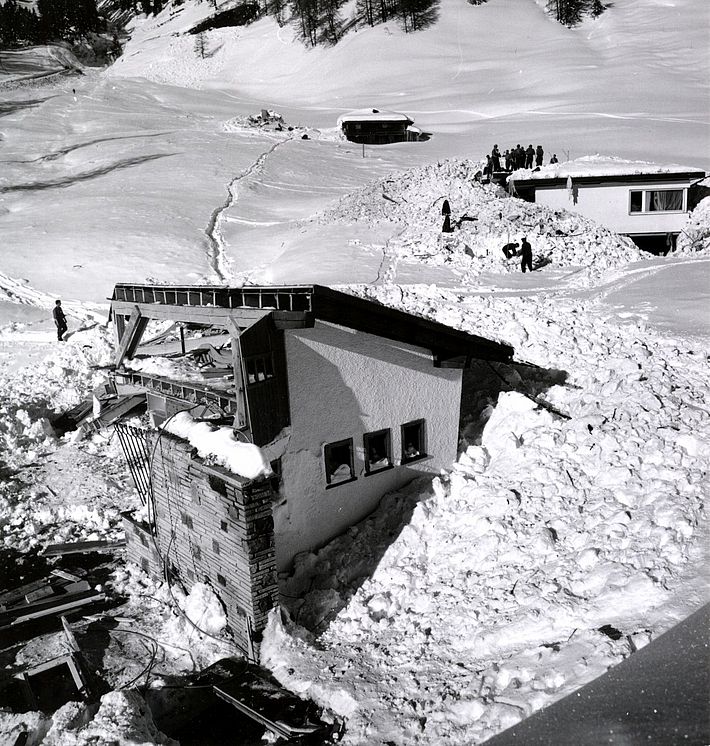26.01.2018 | News
An event being hosted by the SLF and the Town of Davos looks back at the avalanche disaster of 26/27 January 1968.




Fifty years have passed since a series of hugely destructive avalanches struck Davos on 26 and 27 January 1968. No fewer than 41 avalanches wreaked devastation over far reaching areas, people were buried by the snow masses in six of the events. In the settlement zones of Davos thirteen people lost their lives in avalanches. Fifty-one residential properties, 14 barns and eleven hectares of forest were destroyed or damaged. By far the largest of the ruinous events was the Dorfbach avalanche. Among other annihilating incidents were the avalanche “In den Arelen” in the Wolfgang district of Davos; the Bildjibach avalanche; and the avalanche released from the Brämabüel that reached the site known locally as Dunkle Säge. Power cuts were caused by the toppling of electricity pylons, the Parsennbahn railway was damaged, the Rhätische Bahn railway line was blocked in nine places, and the main road was made impassable by eleven avalanches. For three days Davos was for all practical purposes cut off from the outside world. Only a few helicopter flights were available for the people and goods that needed to be moved most urgently. At the time, the characteristics and consequences of the catastrophe were unprecedented in Switzerland. Even seen from today’s perspective, such a localised concentration of highly destructive avalanches following unfamiliar or very seldom affected paths within a very short time is highly unusual; perhaps best compared with the dreadful avalanches of February 1999 in the Paznaun valley in the Austrian state of Tirol.
In the interim, federal, cantonal and district authorities have invested large sums in providing Davos with wide ranging protection against avalanches. Examples of the many improvements include the 390-meter long avalanche gallery alongside the lake, the avalanche dam in the Parsenn resort below the Schiahorn, extensive danger zoning, installations for triggering artificial avalanches, and the planning measures adopted by the Avalanche Warning Service of the town.
The SLF and the Town of Davos have now issued an open invitation to an event looking back on the avalanche disaster, which is to take place in the Aspen auditorium of the Congress Centre at 8 pm on Tuesday 6 February. Thomas Stucki (head of the SLF’s avalanche warning service) will describe the historical events, and Stephan Margreth (head of avalanche protection measures at the SLF) will present a summary of the avalanche defences that have been implemented since 1968. Hanspeter Hefti of the town’s Avalanche Commission will outline the measures that are now in place in Davos to prevent, to every extent possible, the occurrence of a similar incident. The audience will also hear eyewitness accounts of the immediate aftermath of the avalanche disaster.
Admission is free.
Programme: 8–9.30 pm, Congress Centre, Aspen room
Welcoming address | Tarzisius Caviezel, senior official in Davos |
Description of the avalanche disaster
| Thomas Stucki, head of the SLF’s avalanche warning service |
History of defences in Davos, structural avalanche protection measures since the winter of 1968 | Stefan Margreth, head of the SLF’s avalanche protection measures research group |
Organisational avalanche protection measures in Davos | Hanspeter Hefti, avalanche officer of Davos local authority |
A panel of eyewitnesses talk about their personal experiences
| Moderated by Birgit Ottmer, WSL/SLF head of communications |
Open discussion and questions from the floor
| Moderated by SLF Director Jürg Schweizer |
Contact
Copyright
Copyright
WSL and SLF provide the artwork for imaging of press articles relating to this media release for free. Transferring and saving the images in image databases and saving of images by third parties is not allowed.